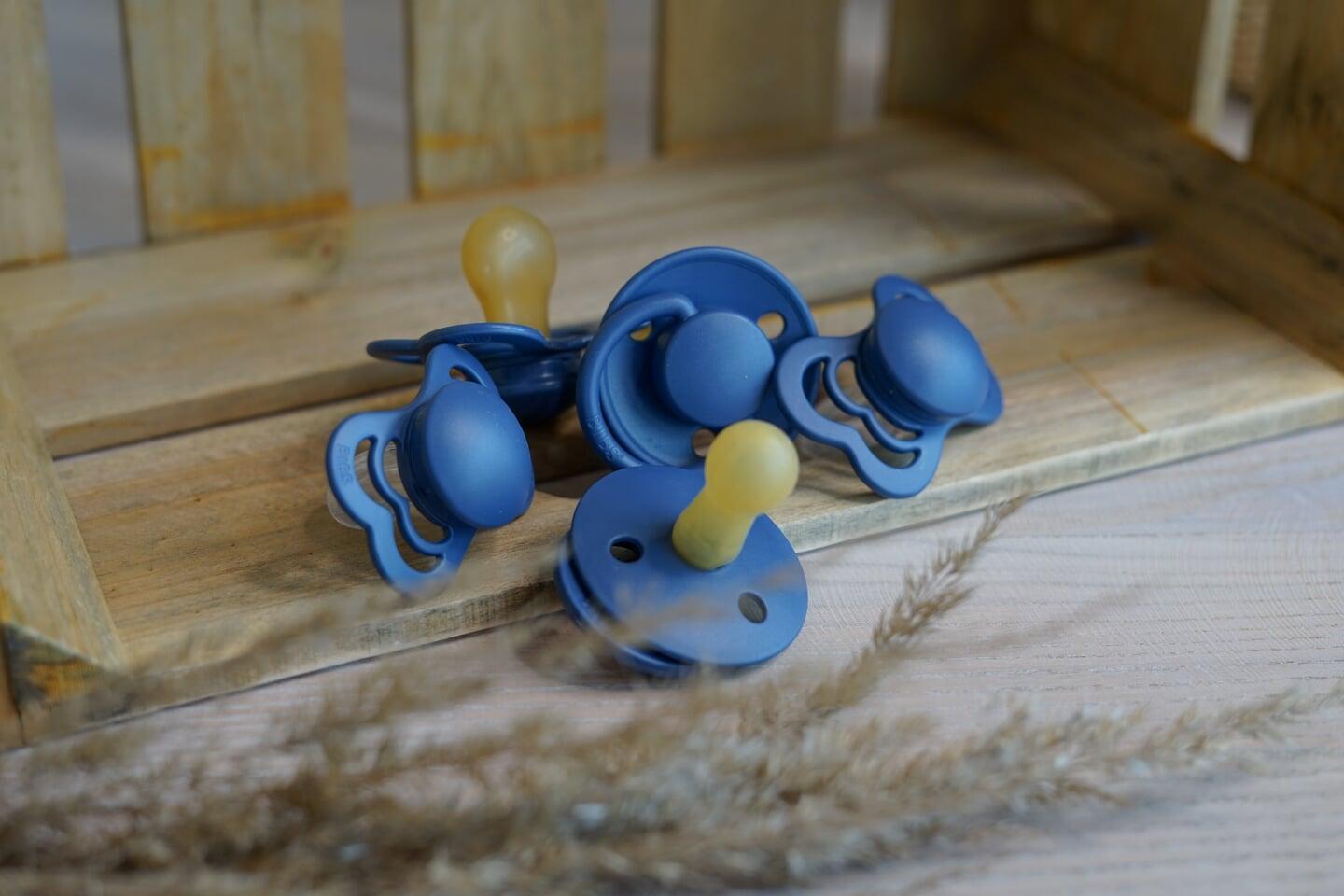Our pacifier nipples are made with two different materials: Natural rubber latex and silicone. We are often asked by parents which material they should choose, and which one is better. Don’t worry we are here to help and guide you.
Natural rubber latex
Natural Rubber latex is a natural material made from a sticky milky fluid tapped from the Hevea tree. The fluid is refined to the brown/yellow rubber you know from your pacifiers; a super soft, elastic, and resilient material very much resembling the mother’s soft nipple.
The natural material comes with a natural aging process affected by natural influences like UV light, air, saliva, and heat. The elasticity of the material allows the nipple to change shape and size because of the baby’s strong vacuum, this means that the nipple in some cases can expand if it is not replaced in time.

Natural rubber latex pacifiers should be scalded rather than boiled and replaced every 4-6 weeks for safety and hygienic reasons.
Since latex is a natural material colour variation may occur.
Silicone
Silicone is an industrially manufactured hypoallergenic, odourless, and taste-neutral material that is known for its purity. It is 100% free of harmful and endocrine-disrupting ingredients such as BPA, PVC, and phthalates. The smooth transparent nipple is not as soft as natural rubber latex, but it retains its shape, does not age, and can withstand high temperatures.
There exist two different kinds of silicone. 1. Silicone for food-contact products (food-grade), or 2. Silicone for pharmaceutical products and implant devices (medical-grade). The key difference between both grades lies in their use:
- Food-grade silicone is used for food contact products and in our case for silicone pacifier nipples, where especially good tensile values are essential.
- Medical-grade silicone is used for pharmaceutical products and implant devices and is tested for biocompatibility, a property that is not relevant for pacifier nipples. Medical-grade silicone does not mean that better quality or better mechanical properties are achieved for products as a result.


Both grades are manufactured under high-quality control procedures to meet the existing regulations and to ensure that there is no harm to humans and the environment.
Our silicone nipples are made of food-grade silicone.
For hygienic reasons we still recommend replacing your pacifiers every 4-6 weeks.
